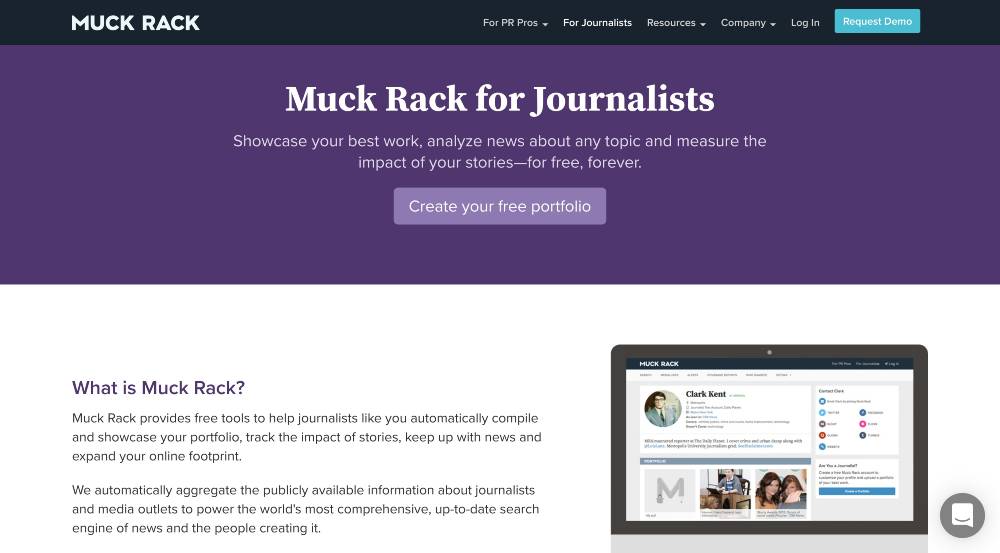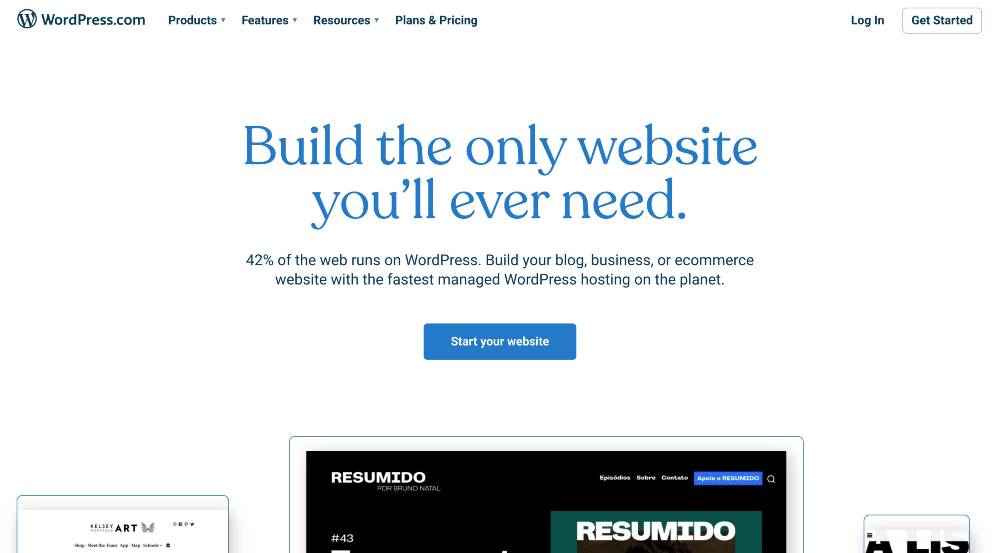How to build your freelance writing portfolio
Here are some tips to build a portfolio and get your freelance writing career started.

The traditional nine-to-five job has lost its appeal and is no longer the preferred career path of the younger generation. Many people are turning to freelance work amidst economic hardship brought on by the ongoing pandemic. In the United States, large swathes of American workers were already joining the gig economy even before the outbreak. According to a 2020 CNBC report, there are 6 million more workers in the gig economy today than ten years ago.
More workers are choosing to prioritize flexibility in their schedules and the freedom to work anywhere. Recent statistics show that about 57 million American workers are freelancers, and one of the most popular freelancing professions is content writing.
If you're reading this, you are either already a freelance writer or an aspiring one who's about to start building a portfolio. As a freelance writer, you are squarely part of the global gig economy.
If you're just getting started, it's best to get off on the right foot by prepping your writing samples. The best way to showcase your clips is through a freelance writing portfolio.
|
Freelance writing portfolio
|
Writing portfolio websites |
What is a freelance writing portfolio?

Like with any job application process, gig employers often require applicants to provide a portfolio of work samples to help them gauge your abilities.
A writing portfolio should contain the best published work samples that a freelancer can show. But it's also important to note that a freelance writing portfolio is more than just a collection of work. Writers should understand that a portfolio is a representation of your personal brand. It shows not only that you have great skills and expertise, but also that you're a specialist on certain beats.
For example, suppose a freelancer wants to market herself as a business writer. She'll want to include her best written articles that reflect her experience and show how she can cover complicated business concepts in an engaging and easily digestible way.
A writer creates a portfolio to build an online presence. As with any industry, freelance writing has a highly competitive landscape. As such, it's important to craft and curate a portfolio that helps you stand out within your chosen niche.
Every writer wants to turn their portfolio viewers into paying clients. Making your portfolio easy to navigate is crucial to giving them a pleasant experience.

What should I put in a writing portfolio?

A common misconception, especially among beginner writers, is that you should put all your writing samples into the portfolio. The truth is that not all your written works should find their way in. You'll need to leave some on the cutting room floor.
There are two things to consider when determining what your portfolio will contain. The first is to identify your specialization or niche. Each writer has their own specialization when it comes to reporting or crafting content. For example, this could be content geared toward technology, business, finance, health, environment, or other areas. Your chosen niche will dictate the narrow curation of work samples on display in your portfolio.
If you're unsure about your niche or specialization, have peers read your articles and ask them what kind of writer they think you are. The most common answer is likely going to be the shoe that fits.
If that niche is not what you intended to pursue, revisit your sample collection and make tweaks to better reflect your preferred specialization.
The second is to identify who your potential clients are. Suppose you're looking to get clients from the finance industry on the customer-facing end, rather than on the B2B side. In such a case, your portfolio should contain samples and published articles about finance that show how you simplify complicated financial terms and create a compelling narrative.
If your target clients are customer-facing finance brands but your portfolio contains primarily lifestyle and pop culture articles, prospects are unlikely to hire you.
For beginners and generalist writers, examine your written works and group them by topic. Create a separate freelance writing portfolio (or separate section of one portfolio) for each vertical that you cover. If you primarily cover finance, but also want to appeal to technology and entertainment clients, create multiple distinct areas of the portfolio. This will convey to prospects that you're self-aware enough to give them each their own section to review. It will also subtly illustrate how diverse you are.

Only include your finest work

After identifying your niche, the next question to answer is how many samples you should include in the portfolio. As mentioned , your portfolio shouldn't contain all your written work.
Putting ten to 20 written pieces in your portfolio is a good start. These pieces should be the very best stories you've written or published in the last two years.
This will allow potential clients to gain a good grasp of your writing talent and expertise, especially when it come to highly technical niches. That said, this number of samples is not a hard-and-fast rule. Depending on your knowledge and range of experience, you may want to include more.
Apart from writing samples, your freelance portfolio should also have a short-form biography. As with a normal CV, you'll want to provide a quick summary of yourself.
Your bio should answer basic question on why clients should hire you. It should include your name (or professional pen name) along with your self-given job title, like 'Freelance Fashion Writer' or 'Tech-savvy Political Journalist.' More importantly, it should explicitly state your areas of expertise, such as the niches you cover and various accomplishments to your name.
You can also include links to your professional social media accounts. Avoid linking personal social media accounts that don't reflect your branding as a writer. LinkedIn and Twitter are among the best social media channels for this.
A freelance portfolio is meant to sell your writing talent, so do consider putting in a clear call to action. This will tell your portfolio visitors what to do next. It might be to 'book an appointment' or 'shoot an email' your way.
Further, if you have satisfied clients, ask them to give a positive testimonial or two about your work. This is something wonderful to add to your portfolio.

How do I create a freelance writing portfolio?
Here are some steps to help launch your freelance writing career:
- Decide on your writing niche.
- Review all your previous written work and select those that best fit your niche.
- Select a writing portfolio app or website to showcase your samples.
- If you don't have any writing samples to show, consider guest posting on another writer's blog or doing a few free articles for prospective clients (yes, that's the level of commitment needed to break into the game).
- Update and review your digital portfolio regularly.
List of writing portfolio websites
Today, it's easier than ever to create your freelance writing portfolio, as there are multiple online builders designed specifically for writers and journalists.
ContentGrow

ContentGrow is a managed talent network and workflow app for content teams of all shapes and sizes. It recently launched a free writer's portfolio for freelancers on its network (an invite-only platform). The portfolio lets users create categories and add unlimited articles easily.
To get writing samples into your portfolio, simply paste a published URL inside and – boom – a clean and simple story snippet will appear.
View your 'Live' portfolio to see how it looks to potential clients. When ready, share your portfolio easily via social media, email, or anywhere on the web.
Here is an example of a writer's portfolio on ContentGrow.
You can start creating your free writer's portfolio on ContentGrow here.

Clippings.me

Clippings.me is another writing portfolio builder created for freelance journalists. It is an easy-to-use digital platform that lets users customize their portfolios. You can choose your own images or use the site's built-in ones. You also have the option to connect your Twitter account and import your avatar and bio.
The free version allows a maximum of ten articles. You can upload them as PDFs or add them as links. It also lets you embed multimedia content such as podcasts. Upgrade to the pro version by paying US$9.99 per month. It comes with search engine optimization, a downloadable resume on the profile, and other features.
Journo Portfolio

Journo Portfolio is a portfolio builder for journalists, freelancers, and writers. With it, there are many ways to design a portfolio. It offers various themes, colors, background images, and fonts. Display a bio, link to your social media accounts, and upload multimedia files.
Writing samples can be added by pasting in URLs of published work. The platform will automatically fill in details such as publication, title, date, and image. It also allows you to sort writing samples into different niches. The online portfolio offers a free version, which allows up to ten articles. Upgrade to the Plus version for US$5 per month or the Pro version for US$10 per month.
Contently

Contently's portfolio is specifically designed for journalists and writers. The app can also be used to connect with clients and find work.
One of the best attributes of this portfolio is its single-page interface. The platform is easy to use and lets freelance writers display an unlimited number of blog posts or other writing projects. Potential clients can filter based on the freelancer’s previous clients.
Another valuable feature from Contently, which can be found on its blog, the Freelance Creative, is its database of rates. This helps freelancers learn how best to price themselves. Contently's portfolio is free for writers. Instead, clients are charged when seek to leverage the network for sourcing talent.

Muck Rack

Different from other portfolio websites, Muck Rack focuses on helping PR professionals connect with journalists. The site auto-generates portfolios for writers by crawling the web for stories that have the writer's byline.
It helps PR professionals pitch stories to journalists by displaying useful information on each portfolio. Muck Rack lets freelance writers and journalists verify their portfolios, then proactively continue building them out. As usual, they can use it showcase their work samples and find clients.
Users can upload PDF articles and insert links.
Writerfolio

Writerfolio's app is easy to use, with a dashboard that lets users fill in the important details without having to worry about putting a website together. Even folks with little experience using digital tools can navigate this one with relative ease.
Users can add an unlimited number of articles and select from a wide variety of themes. The online portfolio has no free version, but a free demo is available. Writerfolio comes with a monthly subscription fee of US$4.
Pressfolios

Established in 2011, Pressfolios has a primary user base of freelance journalists, bloggers, and PR professionals. The app allows both PDF uploads and pubilshed URLs to be added to each user’s portfolio. A full-text backup for each article is also sent to cloud storage.
Pressfolios offers no free version, but you can try out a free trial for two weeks. The Lite plan comes in at US$9.99 per month, while the Pro plan is priced at US$14.99 per month.

Writer's Residence

Writer's Residence prides itself on taking care of the design aspects of your portfolio, as well as other challenges that would ordinarily come with building a website.
Users can try it out on a 30-day free trial. Thereafter, they may continue using the portfolio for US$8.99 per month.
WordPress

As a generalized website builder, WordPress is not specially designed to function as an online portfolio, but many people do like to use it that way.
Some of its basic features include plugins for SEO, social sharing, site traffic statistics, as well as free themes and templates. Wordpress supports customized designs like changing backgrounds, preset color schemes, and font styles.
Users can create a primary site using WordPress with a subdomain, (‘sitename.wordpress.com’). If you want a customized domain without ‘wordpress.com’, the platform offers several affordable pricing plans: Personal for US$2.99 per month, Premium for US$8.25 per month, and Business for US$24.92 per month.

Squarespace

Similar to WordPress, Squarespace is not a dedicated writing portfolio website for freelance writers. Nonetheless, it can be customized and used accordingly.
The platform is easy due to its drag-and-drop design features. It also offers many different templates. Users can customize fonts, layouts, colors, and styles. Portfolios on Squarespace are mobile-friendly. A forest of integrations are also available, including Adobe Creative Suite, Getty images, and Google Drive.
Unlike typial portfolio builders, Squarespace does not offer a free version. Instead, the platform has two pricing plans: Personal for US$12 per month and Business for US$18 per month.
ContentGrow is a freelance writer's secret weapon for landing vetted inbound clients. The platform matches each client with niche-appropriate writers at preferred rates. Sign up to get your invite and free portfolio here.




